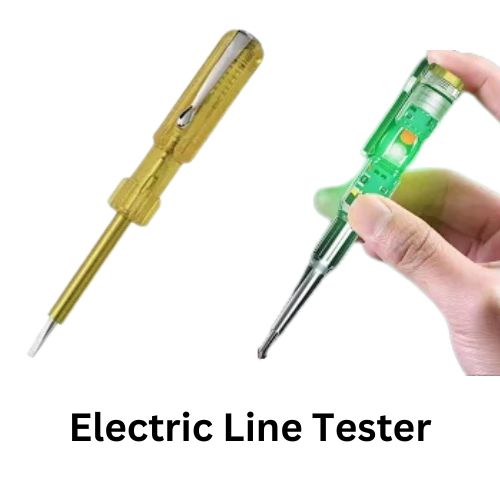An Electric Line Tester is a tool used to detect the presence of electrical voltage in a power line, helping ensure that electrical circuits are de-energized before maintenance or repair work begins. It is a safety device commonly used by electricians, utility workers, and maintenance personnel. The tester’s primary function is to check if an electrical line is “live” or if it has any current running through it.
Key Features of an Electric Line Tester:
-
Voltage Detection: It can detect the presence of AC or DC voltage. Some testers are designed to work on both, while others are limited to one type.
-
Indication Mechanism: The tester typically has a visual or audible indicator. For example, a light might turn on, or a buzzer may sound when voltage is detected, alerting the user.
-
Non-Contact Operation: Most modern electric line testers are designed to detect voltage without making direct contact with the electrical wiring. This is achieved using sensors that pick up the electric field around the wire.
-
Portable and Lightweight: Electric line testers are designed for portability, making them easy to carry and use in a variety of field conditions.
-
Safety Features: Many testers are designed to be rugged and weather-resistant, providing durability in harsh environments. Some also feature safety ratings that specify the maximum voltage they can safely handle.
-
Different Types:
-
Pen-type testers: These resemble a pen or small screwdriver and are very portable. They typically have a light indicator or buzzer.
-
Clamp-type testers: These are more advanced and allow the user to clamp around a wire or conductor to check for voltage.
-
How It Works:
-
Pen-style tester: When the tip of the tester comes close to a live wire, the electrical field around the conductor induces a small current in the tester, which lights up a small LED or triggers a sound to indicate the presence of voltage.
-
Clamp-style tester: When the clamp is closed around a wire or cable, it detects the electromagnetic field generated by the current flowing through the wire and displays an indication.
Common Uses:
-
Before working on electrical systems: Ensuring that the lines are de-energized before any maintenance is carried out.
-
Testing wall outlets: Checking if an outlet is live.
-
Identifying faulty circuits: Troubleshooting issues in electrical installations.


Reviews
Clear filtersThere are no reviews yet.